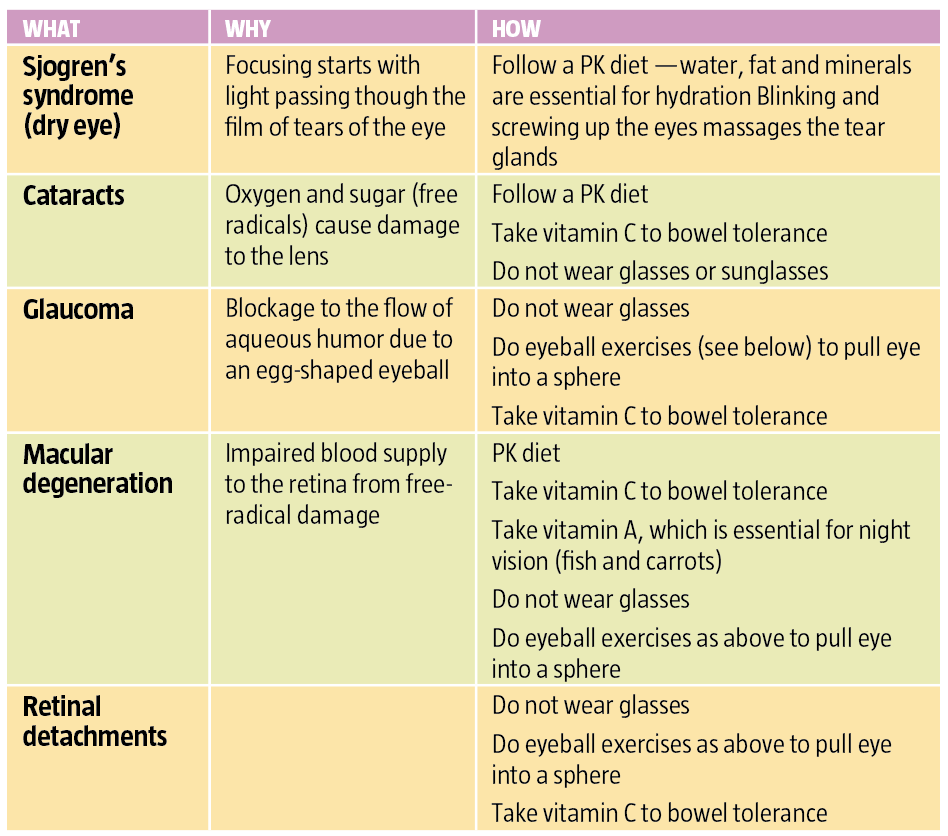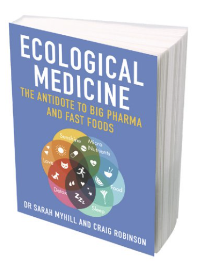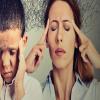 Share on Facebook
Share on Facebook
 There seems to be a general acceptance that we will lose sight with age, and little can be done to prevent it. Age-related far-sightedness (hyperopia) is the most common problem, with glaucoma, age-related macular degeneration and cataracts also considered part of the aging process.
There seems to be a general acceptance that we will lose sight with age, and little can be done to prevent it. Age-related far-sightedness (hyperopia) is the most common problem, with glaucoma, age-related macular degeneration and cataracts also considered part of the aging process.
None of that is true. There are plenty of ways to slow or halt the degeneration of the eyes with just a bit of preventive or corrective medicine.
Having followed my own advice, I no longer need glasses for reading. Dr Jose Mendonca, a renowned dental surgeon and jaw specialist, was diagnosed with myopia (short-sightedness) and prescribed glasses since age 11, but he now flies a plane and reads with minimal corrective lenses. He’s continued to improve since 2018.
I suspect that all the so-called “age-related” eye problems are largely due to the lens stiffening due to deficiency in vitamin C (see box, right), which is why one of the key healers to these issues is vitamin C.
The business of sight requires huge amounts of energy. The job of the retina is to convert the stimulus of a photon landing on it into an electrical signal that the brain can work with.
The brain makes up 2 percent of our total body weight but consumes 20 percent of all the energy generated. The retina, relative to its weight, demands energy at a rate 10 times higher than the brain. No system can generate energy perfectly without some collateral damage.
These damaging units are free radicals. In chemical terms, free radicals have an unpaired electron. This makes them very “sticky” to other substances, and in sticking, they denature and damage those substances, causing degeneration.
Indeed, this is the mechanism that results in the three major eye diseases of cataract, glaucoma and macular degeneration. To mop up these free radicals we need an excellent antioxidant system.
Supplements to improve your antioxidant status
For the connective tissue of the eye to remain elastic and allow these positive changes, you need lots of vitamin C, which mops up the free radicals generated by oxygen. Here’s a full menu of the best antioxidant supplements to take.
Combine them with a paleo-ketogenic (PK) diet. This diet is paleo (no grains or dairy products) and ketogenic (low carbohydrate, sugar, fruit sugar, grains and root vegetables). The aim is to fuel the body with fat and fiber, not sugar and starch. It is not a high-protein diet. One can eat some carbohydrates, but not too much, or the diet fails. See The PK Cookbook by Dr Myhill (Hammersmith Books, 2018) for the full diet and suggested recipes.
Take vitamin C to bowel tolerance. Start with 2 g powdered vitamin C in ascorbic acid form (or sodium or magnesium ascobate if not tolerated) at least twice daily, and increase by 1 g every day. Keep increasing the dosage until you get diarrhea. Hold the dose at this level 24 hours, then experiment until you take the maximum level but can still pass a normally formed stool.
- Zinc 30 mg
- Copper 1 mg
- Selenium 200 mcg
(up to 500 mcg) - Vitamin A 2,000 IU
- Vitamin E 50 mg
- Vitamin D up to 10,000 IU
- Glutathione 250 mg
- Coenzyme Q10 100 mg
(up to 300mg) - Natural antioxidants in the form of vegetables and berries in the PK diet
Acute eye symptoms
- Any loss of vision requires urgent assessment by a professional
- Any major inflammation, pain or eye injury needs the same
- Mild inflammations such as conjunctivitis can be effectively treated by iodine oil. Make sure this is a very weak mix or it will sting something awful!
- Take 100 mg of coconut oil and place the pot in a warm place so the oil just melts
- Stir in 10 mL of Lugol’s iodine (12 percent or 15 percent) to give you a 1 percent mix
- Smear the mixture over the eyelids, and the iodine will evaporate and get into the eye. Do not put into the eye.
Glasses drive pathology
There is a general acceptance that, especially with aging, reading glasses become essential. However, it is biologically plausible—and there is excellent and growing evidence—that glasses contribute to macular degeneration, cataracts and glaucoma.
How so? We see because light is focused on the retina. However, it is not just the lens of the eye that achieves sight—the entirety of the eye is involved.
We need to see at a distance and close up. To achieve this, the lens is constantly changing shape, as is the entire structure of the eye. The eye’s muscles change the shape of the eye from a sphere to an egg, and this pulls the retina forward for distance vision or back for close vision.
The ciliary muscles contract to focus on nearby objects. Not only does this allow the lens to fatten, but its anchor is in the sclera, the tough but flexible shell of the eye. This, too, will pull the eye into an egg shape so that the retina falls back.
The eye needs constant exercise and practice to stay in focus. Essentially the shape of the eye is the coarse tuning
and may take days to adjust, while the lens is the fine-tuning and can bring focus in seconds.
The problem with glasses is they make the eye lazy—the muscles of the eye no longer have to work hard to focus the lens and keep the eyeball in shape. The muscles weaken through lack of exercise, so the eyeball and lens become stiff and out of shape. It’s the old story—use it or lose it.
Glasses, like drugs, are addictive and make for short-term gain, long-term pain.
Typically, our problems start in the late forties, when we first have difficulty reading. The lens needs to be elastic so it can “fatten” to focus on things close to it.
If this elasticity is lost, the focal point is behind the retina. The same focusing problem arises as the ciliary muscles weaken with the lens not fattening, and lack of eye exercise renders them weaker. The eye elongates and becomes egg-shaped to compensate.
In the case of myopia, the eye is also egg-shaped, but the focal point is in front of the retina. The myopic eye can see objects close up, but distance vision is poor. Glasses to correct distance vision only perpetuate the egg shape.
The problems of an egg-shaped eyeball
With the eye in this shape, the vitreous membrane no longer fits snugly at the back of the eye—it starts to peel off, which can cause floaters. The retina no longer fits snugly at the back of the eye—it also starts to peel off, which can cause retinal detachment.
The blood vessels to the back of the eye may be stretched, so they are more vulnerable to damage from sugar and free radicals, with potential for bleeds and macular degeneration.
The quality of the vitreous humor changes so that oxygen can diffuse more readily. The back of the eye is oxygen-rich, and the lens is oxygen-poor—too much oxygen to the lens drives cataracts.
The “plughole” or trabecular meshwork that drains aqueous humor from the anterior chamber lies in the angle between the iris and the cornea. This may be pinched as the eye goes egg-shaped, so the aqueous humor cannot drain out. The pressure of the aqueous humor then rises. This is thought to be the mechanism of glaucoma.
A simple menu for addressing common age-related eye conditions

How to keep the eyeball in shape
- Take vitamin C to bowel tolerance to maintain the elasticity of all the tissues of the eye.
- Exercise the eye. If you are doing close-up work, every so often look up and focus on something in the distance before returning to the work.
- A simple exercise is to hold a finger close to the nose and one at arm’s length—focus on one then the other. As you do so, you will see two copies of the finger you aren’t focusing on.
- Choose a hobby that involves looking at and focusing on things in the distance—such as ball games or bird-watching. When I go walking, I am glued to the sight of my terrier, Nancy, hunting in the distance!
- Blink often—occasionally screw your eyes up tight to massage and stretch the eyeball.
- Always work in bright, full-spectrum light.
How the eye works
Normally, the lens and muscles of the eye work in concert to focus light into a point on the retina at the back of the eyeball. In myopia (short-sightedness), the eye is elongated horizontally into an egg shape, causing that focal point to fall short of the retina. In hyperopia (far-sightedness), the eye is instead elongated vertically so that the light fails to reach its focal point inside the eye.

If you already use glasses
Wear a pair of glasses that are half a diopter too weak. Initially things will be slightly out of focus. Do all the exercises described on page 61 wearing these weaker glasses and take vitamin C. After a few weeks, possibly months, you will have sharper vision. Keep repeating the process with successively weaker pairs of glasses.
If you apply this process to children, then change glasses by a quarter of a diopter at a time. The child may not want to see for other reasons (such as a really boring teacher) and not be so motivated to focus on distal objects. Play ball games and take them “hunting” for objects.
Continue doing the exercises on page 61 to keep the eye in shape.
Let there be light
All eyes, from those of mammals to those of insects, evolved in full-spectrum sunshine. We have receptors in the retina for a wide range of wavelengths, which are essential not just for vision but also for our circadian rhythms.
A pinhole pupil protects the lens from light damage. Bright light is also essential for the eye to exercise the muscles of the iris and ciliary body. Consequently, sunglasses are not good for the eyes!
When indoors, use bright full-spectrum light—ideally window light—or employ full-spectrum and incandescent light bulbs. Artificial LED, halogen and blue light, etc., are no replacement.
Adapted from Ecological Medicine by Dr Sarah Myhill and Craig Robinson
(Hammersmith Books, 2020). Dr Myhill and Mr Robinson’s latest book, The Energy Equation (Hammersmith Books, 2021), is now available as an audio book.

https://www.wddty.com/features/reversing-age-related-eye-conditions/?utm_medium=email&utm_source=wddty&utm_content=Reversing+age-related+eye+conditions&utm_campaign=FREE+MEMBERS+enews+-+%28Reversing+age-related+eye+conditions%29+21.10.2021&gr_s=Oa&gr_m=VZ&gr_x=a62e




